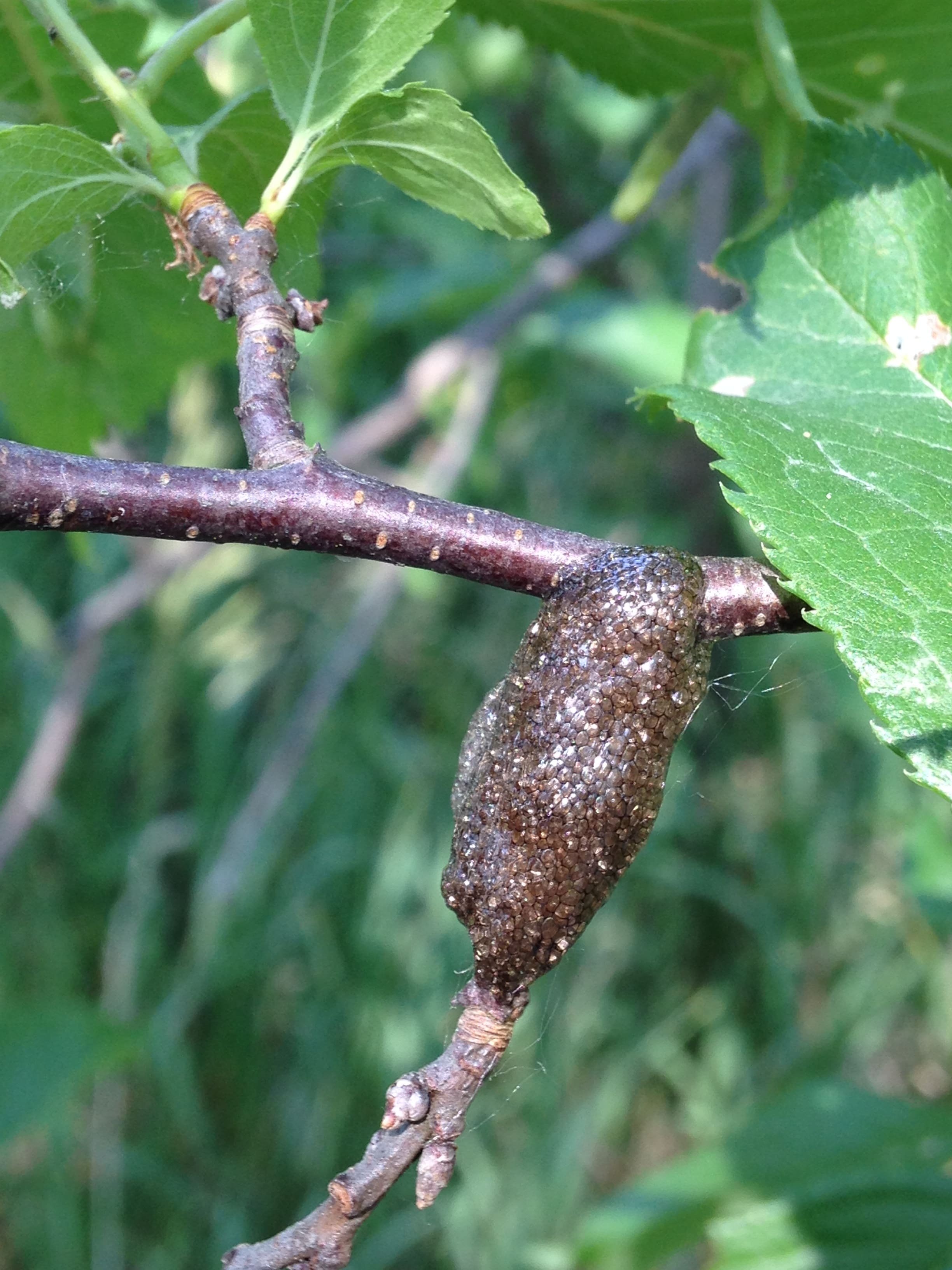Eastern Tent Caterpillar Egg Masses
We were in the midst of a mock evaluation at Mono Cliffs provincial park, making our way slowly through an old orchard which had been left to rewild, when Tamara called our evaluator Alexis over to ask if she could suggest a question for the evaluation. Only thing I heard from their quick conversation was “this will be a hard one”. They directed our attention to the end of an Apple (Malus domestica) branch where a small jeweled formation wrapped around a thin twig, like a bangle or elaborate armband. This broad ring or twig-band, about 3 cm long, seemed to be made up of smaller gemlike circles of gold lacquered together. These smaller circles were about .6 mm in diameter and tightly packed together. There could’ve been 200 of the small gold circles wrapped in this small shiny bundle. I made a guess right away that it must be an egg mass, but I didn’t know who made it. It was mysterious to me. I wrote out my answer and shared it with Tamara and waited for the big reveal.
2023.04.10 Eastern Tent Caterpillar (Malacosoma americanum) egg mass on Chokecherry (Prunus virgininana)
Ever since that day I have been looking for Eastern Tent Caterpillar (Malacosoma americanum) egg masses on any of their preferred host trees, such as Apple, Cherry (Prunus spp.), Hawthorn (Crataegus spp.) and other species in the Rose family. I don’t usually find them, but it has happened at least three times since; once in September 2018, once in July 2022, and most recently, April 10th in 2023 on a Chokecherry (Prunus virgininana) across from the school where I work. This most recent find was pretty exciting as I had just been thinking to myself a couple of days previous that I had not seen any egg masses in a while and it would be nice to find one. I was out one morning recording some audio for an upcoming show, when I was walking along a road and checking out the shrubs alongside. I found the Chokecherry and was reaffirming that my quick i.d. was correct when I noticed the first egg mass, and then a second, and then a third, eventually counting eight egg masses on an individual tree, with up to three egg masses on a single twig.
2022.07.04 Eastern Tent Caterpillar egg mass at the University of Guelph Arboretum by the JCC Nature Centre
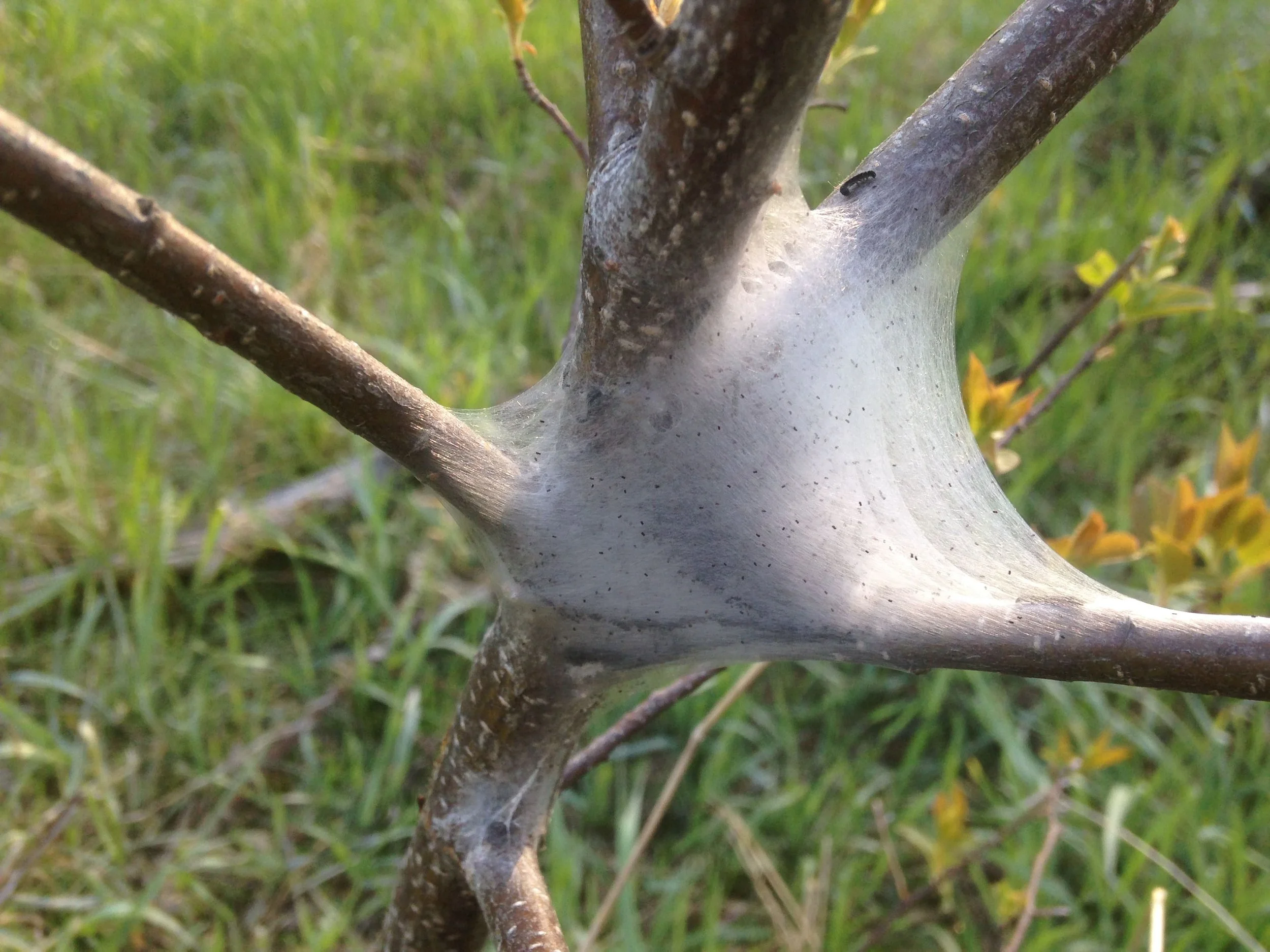
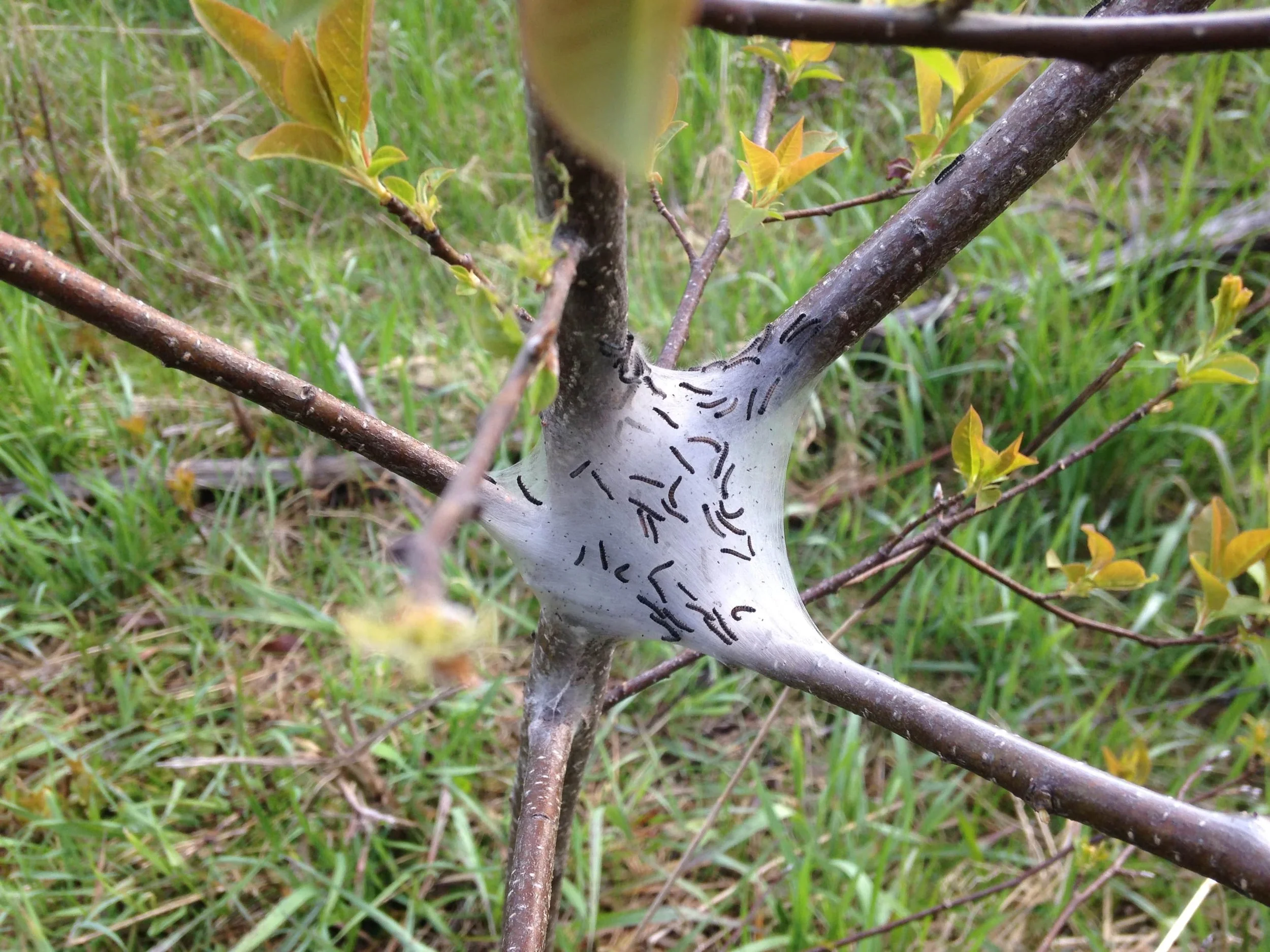
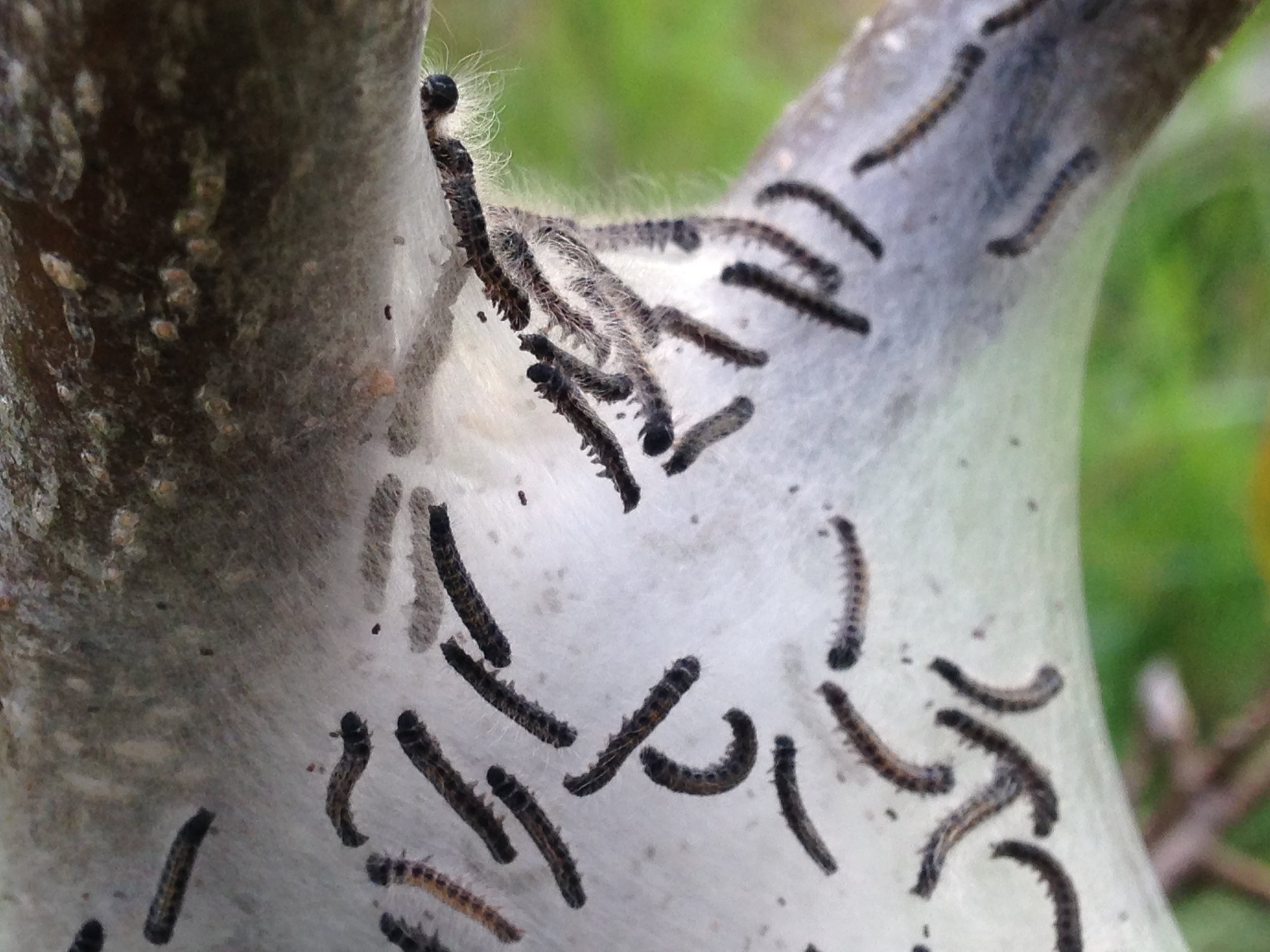
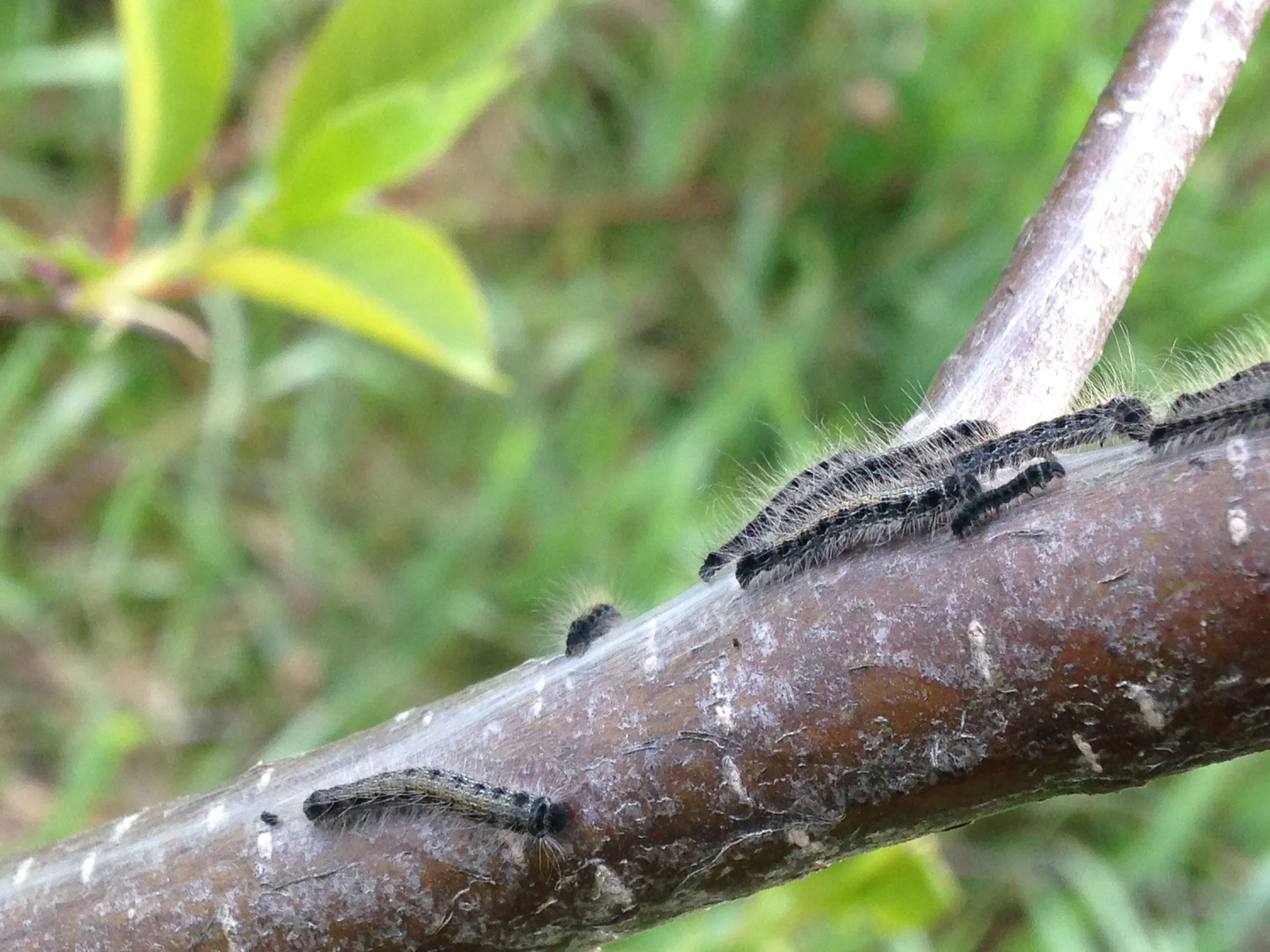
In my research I have found that these egg masses are laid by mid-Summer by the adult female moth (hairy looking, light brown, ante medial and post medial lines are “cream coloured” along the forewings, 15 - 24 mm long, fly late Spring to latter half of Summer). These egg masses can contain between 150 to 400 eggs, but usually more like 200. The female seems to then excrete a brown foamy mass which hardens to this beautiful water resistant varnish where the eggs overwinter. I have read that the first instar develops within the egg during the rest of the warm season, and then overwinters inside the egg. Caterpillars hatch from these egg cases in the first few warm days of Spring. They then begin feeding on buds and newly emerging leaves of their host. Its seems like a week after hatching is when they start building their webby nest in the crotch of the host tree where they will congregate and continue feeding, defecating, growing, and molting. After about six weeks they begin a pupation process which lasts another three weeks. When the adults emerge, they mate, and lay more eggs on the preferred host plants, and the cycle continues.
There are other caterpillar species which create similar webs to the Eastern Tent Caterpillar (ETC). One notable species is the Fall Webworm (Hyphantria cunea). There are a couple of useful differences to know to help tell the Eastern Tent Caterpilar and the Fall Webworm apart. Starting with the egg mass, the Fall Webworm creates a white egg mass on the underside of a deciduous leaf as opposed to the ETC who creates egg masses on twigs. Fall Webworm overwinters as a pupa, whereas ETC adults die, and eggs (with first instar) overwinters. Fall Webworm emerges in the late Summer/Fall and creates web nests at the terminal ends of branches, where as the ETC emerges in Spring and creates their webby nests in the crotches of their hosts.
2022.06.04 Eastern Tent Caterpillar near Mulmur Ontario
As I write this, I look out my window and listen to the Spring birds singing. I can smell the warm air from the river and can feel the heat on my bare arms. I realize that this may be one of those warm Spring days where the ETC may be emerging from their nest and it makes me want to sign off on this post and go ride my bike to the Chokecherry shrub with all the egg masses to see if anyone is starting to sneak out. It’s possible today could be the day. I’ll have to go and find out.
To learn more :
Tracks and Sign of Insects and Other Invertebrates by Charley Eiseman and Noah Charney. Stackpole Books, 2010.
A Guide to Observing Insect Lives by Donald W. Stokes. Little, Brown, 1983.
Caterpillars of Eastern North America by David L. Wagner. Princeton University Press, 2005.


